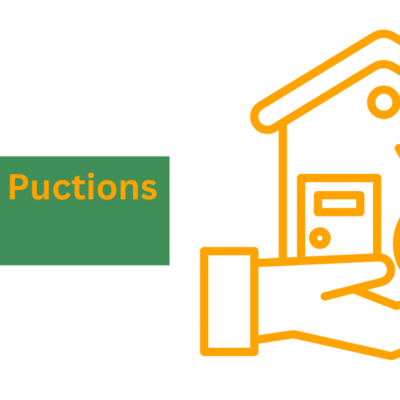Data centers are the backbone of today’s digital economy, powering everything from cloud storage to real-time applications. Yet, as data demands grow, so does the challenge of rising energy consumption. Energy costs remain one of the largest operational expenses for data center managers, often representing nearly 40% of total expenditures. Beyond financial strain, inefficient energy usage also increases carbon emissions, contributing to environmental concerns. Therefore, implementing strategies for energy optimization has become a critical priority for organizations worldwide. This guide explores key methods, tools, and best practices to maximize efficiency while ensuring operational reliability.
Why Energy Optimization Matters in Data Centers
The global demand for computing resources is expanding rapidly, driven by big data, IoT, and AI applications. As a result, data centers are consuming more electricity than ever before. Without energy optimization, facilities risk higher operating costs, reduced equipment lifespan, and potential downtime caused by power overloads. More importantly, enterprises face growing pressure to align with sustainability goals. Regulators, investors, and customers increasingly expect companies to minimize their carbon footprints. Optimizing energy not only reduces costs but also enhances brand reputation, compliance, and long-term competitiveness in the market.
Identifying Energy Consumption Hotspots
Before implementing solutions, it is crucial to identify where the bulk of energy is consumed. Cooling systems, servers, storage equipment, and networking devices are typically the largest contributors. In many cases, cooling alone accounts for 30–40% of a data center’s electricity usage. By analyzing these hotspots, managers can create targeted plans for energy optimization. For instance, deploying intelligent airflow management, adopting hot and cold aisle containment, and adjusting equipment layout can significantly cut unnecessary cooling loads. Regular audits and monitoring provide the insight needed to fine-tune strategies effectively.
Leveraging Technology for Smarter Operations
Advancements in technology now make it easier to manage and reduce power consumption. Machine learning, automation, and predictive analytics allow data centers to anticipate energy needs and adjust in real time. Intelligent sensors track metrics such as temperature, humidity, and server workloads, ensuring resources are allocated efficiently. Virtualization also plays a key role by consolidating workloads onto fewer servers, reducing idle energy draw. Ultimately, energy optimization is not a one-time initiative—it requires ongoing integration of smart technologies that adapt to changing operational demands.
Role of Data Center Infrastructure Management (DCIM)
One of the most effective tools for enhancing efficiency is Data Center Infrastructure Management software. DCIM provides real-time visibility into power usage, capacity planning, and asset performance. By consolidating data across facilities, managers gain actionable insights to pinpoint inefficiencies and prioritize improvements. For example, DCIM tools can identify underutilized servers, track energy usage trends, and recommend better equipment placement. This not only improves energy savings but also extends the life of critical assets. Through DCIM, organizations can make evidence-based decisions that align both financial and sustainability objectives.
Optimizing Cooling for Maximum Efficiency
Cooling represents a major opportunity for energy optimization in data centers. Traditional systems often run at full capacity even when workloads fluctuate, leading to wasted energy. Modern approaches, such as liquid cooling, economizers, and free cooling, offer more efficient alternatives. Additionally, using variable-speed fans and adjusting temperature set points can reduce unnecessary strain on cooling equipment. The adoption of AI-driven cooling systems is also growing, with algorithms capable of adjusting airflow in real time. These measures not only cut electricity usage but also improve equipment reliability by maintaining stable thermal conditions.
Power Distribution and Equipment Efficiency
Energy loss often occurs during power conversion and distribution. High-efficiency uninterruptible power supplies (UPS) and power distribution units (PDUs) are critical to minimizing waste. Furthermore, choosing servers and networking equipment with high Energy Star ratings helps reduce baseline consumption. Consolidating workloads, decommissioning unused hardware, and implementing virtualization technologies also streamline operations. All these practices contribute to energy optimization, ensuring that every watt consumed translates into productive computing power rather than wasted heat or idle usage.
The Impact of Modius on Sustainability Goals
Sustainability is becoming a defining factor in enterprise operations. With governments introducing stricter energy efficiency standards and customers demanding greener solutions, organizations can no longer overlook their environmental responsibilities. Here, Modius plays a transformative role by enabling predictive energy management. Analyzing historical data allows facilities to forecast future demands and reduce reliance on overprovisioning. This predictive capability supports not only cost reduction but also alignment with global sustainability initiatives, making energy-efficient operations a competitive advantage.
Renewable Energy Integration
Another growing trend in energy optimization is the integration of renewable energy sources. Data centers are increasingly turning to solar, wind, and hydroelectric power to reduce dependency on fossil fuels. Many leading providers are even entering power purchase agreements (PPAs) with renewable suppliers to secure long-term clean energy at stable prices. On-site renewable installations, combined with battery storage solutions, further enhance resiliency and efficiency. While initial investment may be significant, the long-term benefits include reduced operational costs, compliance with environmental regulations, and an improved corporate image.
Building a Culture of Continuous Optimization
Energy efficiency is not solely a technological challenge; it requires a cultural shift. Teams must be educated about best practices, from switching off idle equipment to leveraging software that reduces waste. Regular training ensures employees understand the importance of energy optimization and remain proactive in suggesting improvements. Continuous monitoring, regular performance reviews, and adapting to new technologies are also vital. By embedding efficiency into organizational culture, companies ensure that energy-saving measures are sustained over the long term rather than being treated as temporary projects.
Conclusion
The path toward sustainable and cost-effective operations begins with energy optimization. By identifying consumption hotspots, implementing smart technologies, and leveraging tools such as Data Center Infrastructure Management and DCIM, organizations can dramatically reduce energy waste. Cooling strategies, renewable integration, and efficient power distribution all contribute to measurable improvements. More importantly, embracing energy optimization is not just about cutting costs—it strengthens resilience, supports compliance, and demonstrates environmental leadership. As the demand for digital services continues to rise, optimizing energy usage in data centers will remain a cornerstone of sustainable growth.




